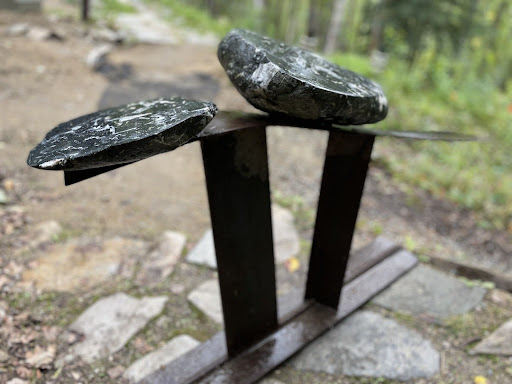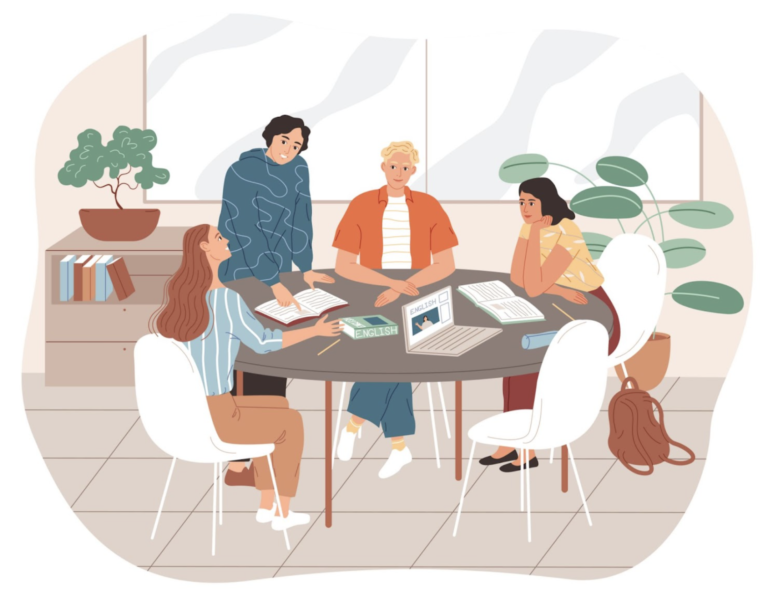
Innovating through repair
If you’ve lived in Fairbanks, Alaska, you know about the transfer sites — neat rows of dumpsters next to a covered concrete pad (transfer pad) where people can drop off used items for a new life. Its waste management meets Alaskan grit and resourcefulness.
Stories of great finds trickle down from family and friends. My sister’s dishes and a rug went right from an army officer’s truck to her Subaru in the transfer site lot, not even touching the transfer pad (a point of pride). She told me this story over dinner, of course. I looked down at my plate and below the table at the rug. Both looked new. A family friend and artist found a rock saw — a tool that can cut a watermelon-sized rock in half! After some grinding and polishing, these sliced rocks become beautiful reflective half-moons, slick and glowing with light.
A key facet of these stories is the relative ease of the repairs. The rug needed some mending and a coffee stain removed. The rock saw needed a new blade and a powerful outlet. Each storyteller frames the item’s repair as an ideal blend of both their personal need and capacity.
“…[repair] fills in the moment of hope and fear in which bridges from old worlds to new worlds are built, and the continuity of order, value, and meaning gets woven, one tenuous thread at a time.”
(Jackson, 2014, p. 223)
How can we make space for stories like these to happen in our teaching practice?
When a glorious assignment stops working because of a tool deprecating, or a good lecture video just doesn’t quite fit with the course structure anymore, we make new ones and leave the old ones. The norm is to hide the defunct parts of our teaching. But what if those things could be just what another instructor is looking for?
“… worlds of maintenance and repair and the instances of breakdown that occasion them are not separate or alternative to innovation, but sites for some of its most interesting and consequential operations.”
(Jackson, 2014, p. 227)

Innovating is not always about the newest tool. Turning inward as a community, sharing used resources and repairing as needed is an Alaskan way of life. Just as transfer sites are a physical manifestation of this, we can create and find places online that allow us to share and reuse discarded resources for teaching and learning.
For this teaching tip, we invite you to look back through your old materials and find something that used to serve your course. It’s okay if it is beyond repair. It’s okay if it is from a teaching guide that you got in 1973. It’s okay if it was an idea you tried one semester and it bombed so terribly you don’t even like thinking about it. Heck, it’s even okay if the activity is perfectly good and functional but you just need to share it. Go to the Virtual Transfer Site, follow the instructions and drop it off for someone else who may be able to use it. Maybe you are looking for inspiration? Like an actual transfer site, you can also take things from the Virtual Transfer Site and check back regularly to see new items.
The final piece of any good transfer site story is the show and tell. Cupboards full of sparkling dishes, impressive sculptures of iron and cut rock, a spotless floor rug — each item nestled into a home that needed them. As you frequent the Virtual Transfer Site or Canvas Commons and make your own stories of repair and OER usage, we hope you’ll share them with us either by commenting below or on the UAF Faculty Hub Slack channel #opened. Happy repairing.
References
Jackson, S. (2014). Rethinking Repair. In Media technologies: Essays on communication, materiality, and society (pp. 222–239). essay, The MIT Press.




